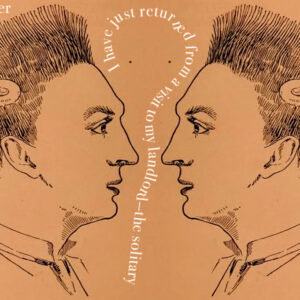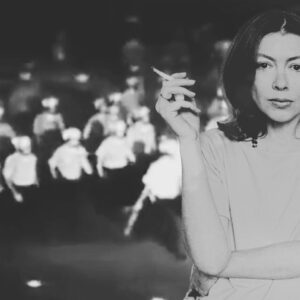
On Translating Proust and the Art of Not Reading Ahead
“It is a bummer to me that Proust occupies such a rarefied, even elitist, realm in the culture.”
Le devoir et la tâche d’un écrivain sont ceux d’un traducteur.
–Marcel Proust, Le Temps retrouvé
*The duty and the task of a writer are those of a translator.
–The Past Recaptured, translated by Frederick A. Blossom
*The function and the task of a writer are those of a translator.
–Time Regained, translated by Andreas Mayor
*The writer’s task and duty are those of a translator.
–Finding Time Again, translated by Ian Patterson
*
In 1919, Charles Kenneth Scott Moncrieff, spurred by the challenge of Marcel Proust’s winding sentences, began privately translating Du Côté de chez Swann, the first volume of À la recherche du temps perdu, into English. Swann had come out in France in 1913, but a reissue and its sequel, À l’ombre des jeunes filles en fleurs, was published that year. Eventually Moncrieff received a contract for the work, and his version, called Swann’s Way—after “swans weg,” a phrase from Beowulf, which Moncrieff had also translated—was published in 1922.
In the one letter Proust wrote to Moncrieff, he acknowledged the “remarkable way” in which the translation had been done, but gently criticized both the title Swann’s Way and the one Moncrieff had given the larger work, Remembrance of Things Past (“À la recherche du temps perdu ne veut nullement dire cela.”) The author died a month later.
In subsequent years, amid a whirl of his own writing, travel, a robust social life, periods of illness, a stint as an intelligence agent in Fascist Italy, not to mention completing numerous other translations by the likes of Stendhal and Pirandello, Moncrieff, in a feat that looks unlikely to be repeated, translated all but the seventh and last volume of Proust’s opus before his own premature death in 1930. Moncrieff’s work was twice revised—in 1981 by Terence Kilmartin, and 1992 by D.J. Enright—to correct mistakes and smooth out prose typically described as “flowery.” It remained the standard, indeed only, English-language Proust for most of a century.
Then, in 2002, the Penguin Proust appeared, bearing a more literal title, In Search of Lost Time, which D.J. Enright had used for the Modern Library publication. Each of the seven volumes was done by a different translator.
In a sour two-part review in the New York Review of Books (followed by a spicy exchange in the letters section!), noted Proustian André Aciman pulled no punches. Peppering his take with chilling words and phrases like parallel participials, clausula, anacoluthon, and Proustian hermeneutics, Aciman argued that a “translator’s aim should be to capture both the luster of Proust’s insights and the stylistic pitch of his sentences.” At this, in his view, the Penguin project had failed. Moncrieff “had crafted a language . . . [that] despite some noticeable shortcomings and inaccuracies, was able to convey the scope and sweep of Proust’s vision.” The new translation, on the other hand, was “the product of writers who are each translating a different Proust and whose operating principles could not be more different or ill-defined.”
Indeed, it is a bummer to me that Proust occupies such a rarefied, even elitist, realm in the culture—to the extent he is present at all—because he is far more accessible than most people realize, and a lot funnier.
The reader would have to take Aciman’s word for this, since he examined only the first two volumes, comparing numerous passages from various translations to the point of tedium. Lydia Davis, who translated Swann’s Way, in her too-slavish attention to Proust’s word order, had sacrificed “psychological nuances” for “semantic tact,” resulting in a “less resonant” cadence. Sure, she could “translate a sentence by Proust; but she still doesn’t get how it works.” Davis might be a dutiful and scrupulous translator, but “Wordlingo, the automated on-line translation service that is surprisingly accurate for a machine is dutiful and scrupulous too.”
James Grieve, translator of À l’ombre des jeunes filles en fleurs, fared worse. His title, In the Shadow of Young Girls in Flower, was “gobbledygook” that approached “monstrosity.” (For good measure, Aciman also trashed Penguin’s title for the final volume, Finding Time Again, calling it “thoroughly absurd.”) Whereas Davis had adhered too strictly to Proust’s word order, Grieve altered it irresponsibly, resulting in a style “more like a cross between Anthony Trollope and Nancy Mitford.” In an act of literary “legerdemain,” the translator had essentially rewritten Proust, spewing out mere prose. “And that’s not good enough.”
Something that was “good enough,” in Aciman’s estimation, was the novel’s old title, Remembrance of Things Past, a phrase plucked by Moncrieff from a Shakespeare sonnet. Changing it had been a mistake on D.J. Enright’s part, one of few, it would seem. Otherwise, per Aciman, Enright’s final reworking of Moncrieff’s classic translation brought readers “closest to the source.” The question, then, was “not which of the four available versions must a prospective reader purchase, but why a new translation in the first place. Why ever a new Proust?”
*
Is André Aciman right? Should Penguin have left “well-enough alone”? Does the Kilmartin/Enright version of In Search of Lost Time bring us closest to Proust in French? He sure sounds authoritative. But how is a general reader to know? Is there such thing as a “general reader” of a hundred-year-old, three thousand page French novel?
And what of the work of William Carter? The eminent Proust biographer has produced an annotated version of the novel, published by Yale University Press, that dials it all the way back to Moncrieff. The Kilmartin/Enright revisions “were not always felicitous or accurate,” Carter writes in his Swann’s Way introduction. Moncrieff “seems to have been more sensitive than Kilmartin or Enright to the cadence of Proust’s sentences,” and Carter’s “sole intention . . . was to bring [his] excellent translation closer than ever to the spirit and style of Proust’s original text.” So . . . this version is closest?
Chatting about Swann’s Way in a bookstore once, the clerk said something to me like, “the Lydia Davis translation’s supposed to be the best one”—which I have heard before. But according to whom? Maybe the same etheric source that led me, when I first started to read Russian literature in 2003, to the translations of Richard Pevear and Larissa Volokhonsky. I had some notion, based on who knew what, that, well, those were the best ones. A review blurb by James Wood told me their Anna Karenina was the work of “scrupulous translators” and would allow me to grasp Tolstoy “as perhaps never before.” (Can Wood read Russian? I still do not know.)
As for Proust, whom I also read for the first time that year, Richard Howard, in a bizarrely overwritten blurb, assured readers of Modern Library’s In Search of Lost Time (meaning Moncrieff/Kilmartin/Enright) that it “affords the surest sled over the ice fields as well as the most sinuous surfboard over the breakers of Proust’s prose . . .”
*
In January 2024, as part of a radical self-improvement program, also because I am obsessed with Proust, whom I was rereading, I started to learn French. In August, although I had recently finished the entirety of the Penguin translation, I returned to Swann’s Way, determined to read it in both French and English. It took eight months. I would read the French aloud, sometimes managing only a few pages, then the same section in the original Moncrieff translation. Struggling through pages of unbroken text, in the imperfect tense, constantly consulting a French dictionary, rereading passages two, three times, I often wondered: Am I getting anything out of this? Catching the rhythm and beauty of Proust’s famously long sentences?
I confess that I may not have been sledding and surfing. But I did learn things about the language, and to my delight began to catch small instances of Moncrieff’s famous padding. As the months wore on, I found myself thinking more deeply, almost in an existential way, about the process—the art—of literary translation. And the more I thought about it, the more mysterious it became.
When I was younger I believed—well, I don’t know what I believed, because it never occurred to me. But if you had asked me what translation was, I am sure I would have mumbled something about how it was just, like, swapping out one set of words for another. In high school I read Journey to the End of the Night by Louis-Ferdinand Céline after learning the Doors had nicked the title for one of their songs. There was a second name on the cover: Ralph Manheim. Who was he? No idea. Didn’t care.
As I was finishing Du Côté de chez Swann, brimming with pride and perplexity, I learned of a new translation of In Search of Lost Time. Oxford World’s Classics, whose very name conjures for me an image of the imprint’s white spines, was doing the novel, like Penguin, using multiple translators. Volume one, The Swann Way, translated by a Brian Nelson, had been out since 2023. Volume two, in a turn that felt like fate reaching out to me—it was the book that made me fall for Proust, in whose luscious atmosphere I wish I could live—had just been published. The title was In the Shadow of Girls in Blossom. The translator was Charlotte Mandell.
*
Why ever a new Proust? According to Brian Nelson, coeditor of the Oxford Proust and translator of its first and last volumes, the answer, relayed to me in an email, is straightforward: Oxford World’s Classics—obviously a publisher of great works—simply felt it should have its own Search. Will that satisfy André Aciman? Hard to know. Maybe he has mellowed in the twenty years since his NYRB piece.
In a more generous assessment of the Penguin Proust in the London Review of Books, published the same year, Michael Wood wrote, “It seems likely, and appropriate, that people will always refer to Scott Moncrieff when they speak seriously about reading Proust in English, but I’m not sure a new translation has to ‘better’ his version.” Although he concluded a beat later that he felt Penguin had. The new version “makes Proust stranger than he seems in the earlier version—that is, almost as strange as he seems in French.”
Indeed, it is a bummer to me that Proust occupies such a rarefied, even elitist, realm in the culture—to the extent he is present at all—because he is far more accessible than most people realize, and a lot funnier. Neurotic, sickly, gay, cork-lined room, guy tastes a bit of cake and thinks up an endless book filled with interminable sentences, etc.—but you almost never hear about how funny Proust is.
In a later essay in the anthology Proust in Context, Wood wrote, “The notion of fidelity has dogged translation since antiquity . . . But it has the immense drawback of presuming the existence of a stationary original text, always faithful to itself.” Rather, Wood said, “the original text of any work that matters changes over time. It creates new readings, which in turn alter the text itself . . . Every translation has its own mode of tuning and once we are beyond gross errors, we can come to our own conclusions about the music.”
*
Around the time I was learning to ask what the weather was like in French, Charlotte Mandell was named a Chevalier dans l’Ordre des Arts et des Lettres by the French government. “Translators are used to being invisible,” she said in her remarks at the ceremony—a sentiment she echoed when I was speaking with her over Zoom.
“That’s why translators are forgotten,” she told me. “They become invisible. We disappear behind the text.”
Yet as I was reading her In the Shadow of Girls in Blossom, she was constantly on my mind. It was my fourth time through the novel—but my first with a deeper awareness of it as a translated work. The result was a kind of doubling of the text. Marcel Proust, quite obviously, had written the book. But Charlotte Mandell had written the English words I was reading, whose power and beauty left me gasping and stunned.
When did it first occur to her to translate a text?
Mandell went to Boston Latin School, where students study the dead language. She could read and speak French, but at Boston Latin translated The Aeneid into English. “I just found my notebook in the garage,” she said. “It’s actually not bad. The fact that it was a dead language helped. Because you’re making something dead come alive. You can make it live in a text. So that’s when I first got the bug for translating.”
After she graduated from Bard, Pierre Joris recommended her to Stanford University Press for her first book-length translation, Maurice Blanchot’s The Work of Fire. Since then, she has translated a range of classic and contemporary authors including Balzac, Flaubert, Genet, Valéry, Céline, Jonathan Littell, Mathias Énard, and two earlier works by Proust: The Lemoine Affair, comprising his famous pastiches, and The Mysterious Correspondent, a collection of lost stories.
I told her À l’ombre des jeunes filles en fleurs was my favorite volume of the Search. She said hers was Le Temps retrouvé.
“The way everything comes together. All the characters and all of his past experiences coalesce. Everything falls into place. You feel like you’ve been living with these people for so long. All those incredible epiphanies that he has, which are amazing. There’s just no other book like it.”
Charlotte Mandell had written the English words I was reading, whose power and beauty left me gasping and stunned.
Listening to Mandell, I recalled favorite scenes from that novel and thought: Maybe it’s my favorite too. I felt out of my depth. I was speaking to someone who had TRANSLATED PROUST! Which, to me, was akin to pure magic.
Mandell had read Moncrieff’s translation of the Search first.
“It’s really beautifully written, but there are a lot of mistakes. And he also tended to add things that weren’t there. As a translator, that’s not something that I would do. But the English is beautiful. A lot of people equate Moncrieff with Proust, but it’s very different. Moncrieff tends to overwrite a lot, and Proust doesn’t do that. He’s actually very succinct. People think that he goes on and on, but he doesn’t really. The sentences can be very long, but there’s a reason that they’re long. That’s one of the things that surprised me when I translated him—how much he got into a sentence, how much he managed to pack in.”
Moncrieff’s method, according to Chasing Lost Time, a biography by his great-great-niece Jean Findlay, “was to read a passage silently, think on it, and scribble a version in English in a jotter which he would then test by reading it aloud to a discerning ear.” Later he would have friends read the French aloud as he wrote his translations down, then read over it himself. Once he had a rhythm he liked, he would type it.
Mandell’s method for In the Shadow of Girls in Blossom involved four texts: two copies of the French that she was translating (the 1987-1989 Pléiade edition)—one on a split-screen on her computer alongside her working document, the other a hard copy—and the Moncrieff and James Grieve translations. She would read a line, translate it, check it against Moncrieff and Grieve. Grieve wanted to make Proust more idiomatic and sound up-to-date. Moncrieff was the opposite, old-worldly, not of this time. But if one or the other had a nice word or turn of phrase—more often that would be Moncrieff—she might use it.
The work was . . . slow.
“I should say that another one of my rules is that I don’t read ahead. So I’m reading the book as I translate it, which a lot of translators don’t do. Obviously I had read this book before, but in this case I was taking it sentence by sentence. And it took a long time because I had to compare, and then rework my own translation, line by line. I would only do two or three pages a day. You have a responsibility. This is such great literature that you don’t want to make a mistake.”
As with all of her books, she would read the day’s—or rather the night’s work (Mandell works through the evenings, finishing in the wee hours) aloud to her husband, the poet Robert Kelly, who would offer suggestions if something sounded off. “He calls it his bedtime story. It’s usually like two in the morning,” she laughed.
To Mandell, the so-called seams are an important aspect of Proust’s style.
Moncrieff had struggled with the book’s title, believing a literal translation would make British readers think of menstruation. He enlisted the help of no less than Joseph Conrad, who suggested “In the Shade of Young Girls in Bloom” and “In the Shade of Blossoming Youth.” Finally Moncrieff chose Within a Budding Grove, from a poem by William Allingham.
“Which loses everything, really—I mean, it loses the girls. You sort of have to have the girls in the title,” Mandell said, referring to la petite bande, the group of young women—including Albertine, a key figure in the Search—the Narrator meets in Balbec, the seaside town where much of the novel takes place.
In her Translator’s Note, Mandell stresses that, while their ages are never made clear (nor, for that matter, is the Narrator’s: he goes from playing games in the Champs-Elysées to visiting a brothel with no temporal signposts) they are still very much girls, roughly in their mid-teens. In Moncrieff’s fusty presentation, she told me, “they sound like old men. That’s one of the things I wanted to do also: get the girls to sound like girls.”
Also in her note, she brings up something James Grieve wrote in his Introduction, about Proust’s prose having “rough” seams. That description had always stuck with me. I am such an impressionable reader—and so easily cowed by scholarly argument—that I assumed it must be true without quite knowing what it meant. To Mandell, the so-called seams are an important aspect of Proust’s style.
“When Grieve says seams,” she said, “I think he means that Proust might switch tenses in an odd way. He might switch from imperfect to passé composé. Sometimes it can be jarring . . . But when you really look at it, you’ll see that there’s a reason why Proust is using one or the other. I guess some people might call that a seam. But it’s important to keep that. No one had written like that before. So you don’t want to make it sound normal. It wasn’t normal.”
And she made a suggestion that threw me.
“You should try translating something. Pick a passage that you really like and then look at what Grieve did. That’s really the way to see how someone thinks. Just do it yourself. And don’t cheat,” she laughed. “Don’t think about whether it’s good or not, just do it.”
I immediately demurred. My French is poor. Mandell insisted I give it a shot. In fact, there was an apt precedent: Marcel Proust himself spent six years translating the work of English art critic John Ruskin, despite being unable to speak or read English! He had access to something greater than a translation app: his mother. Jeanne Proust, so devoted to her son, wrote the first drafts of his Ruskin translations, which he would heavily revise and annotate, then send to a friend to polish, only to alter them yet again. According to Jean-Yves Tadié’s Marcel Proust, the writer “felt that translation was a marvellous school for style.” In constantly reworking his drafts, “[t]he structure of Ruskin’s sentences, which were long, rich in incident and imagery, supple and musical . . . impregnated his style, which since Jean Santeuil [Proust’s abandoned first try at a novel], had been groping around in search of a model.”
Fumbling for a way to wrap up, I asked, “What do readers want out of a translation? Do you think they think about it at all?”
She was shaking her head before I had even finished. “I think people are starting to pay more attention to translators. But you can see in reviews, critics will review a book as if it was written in English. They think that translation is some kind of secretarial job, like you have a book and just type it up in English.” Translators are forgotten, we disappear behind the text. “I think it’s good that readers are starting to realize there are people involved. It’s not AI.”
Speaking of—does she—do others in her profession—sense a looming threat?
Mandell said, “Not for me, because I do literary novels. But for people who translate thrillers and mass-market books, I think there is a real threat. AI translation has gotten very good. It can do a mass-market paperback pretty well—not as well as a human, but plausibly. And a lot of people might not even notice that it wasn’t translated by a person. The fact that that’s possible is kind of sad. But I’m not worried, because, I mean, no AI thing will ever be able to translate Proust.”
*
Surely not. But could I? I flipped through À l’ombre des jeunes filles en fleurs looking for a sentence that was relatively short, whose context and meaning I did not readily grasp, but that was also at least somewhat Proustian structurally. I chose the following: “Il n’est peut-être rien qui donne plus l’impression de la réalité de ce qui nous est extérieur, que le changement de la position, par rapport à nous, d’une personne même insignifiante, avant que nous l’ayons connue, et après.” (As you will see, I made at least one howler: because I did not find that spelling of connue among the conjugations of connaître [to know] in my verbs book, I used the word in a way I have heard my online French teacher use it. In my defense, I translated it both ways before checking!)
“There is perhaps nothing that gives us so strong an impression of the reality of the external world as the difference in the position, relative to ourselves, of even a quite unimportant person before we have met him and after.
–C.K. Scott Moncrieff (also CKSM/Kilmartin/Enright)
“To give us an impression of the realness of people and things external to us, even if they are insignificant, there are few comparisons more instructive than the change their disposition toward ourselves undergoes between the time before we know them and the time after.”
–James Grieve
“There is perhaps nothing that makes us see the reality of the external world more clearly than a change of location, relative to ourselves, of a person, however insignificant, before we knew that person, and after.”
–Charlotte Mandell
“There is perhaps nothing that gives a greater impression of our exterior reality, than a change of position, in relation to us, of even an insignificant person, before we were well-known, and after.”
–B.A. Charles
Bryan Alistair Charles
Bryan Alistair Charles is the author of a novel, a memoir, and a book about Pavement written for Bloomsbury's 33 1/3 series. He lives in California.












